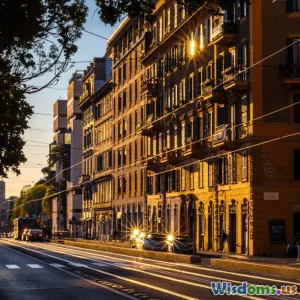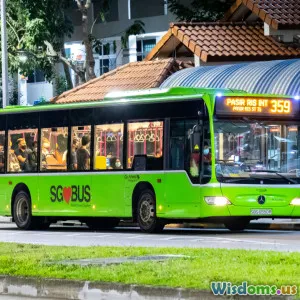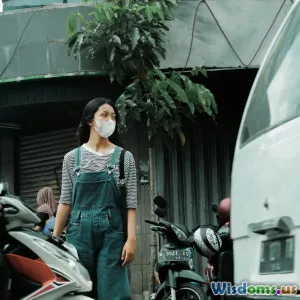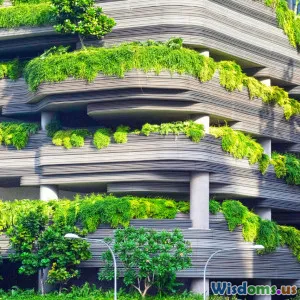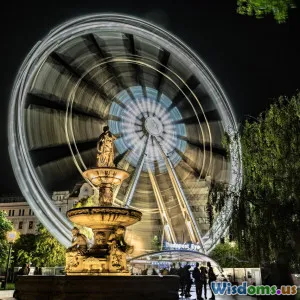
Five Ways Nature Trails Ignite Urban Downtown Renewal
12 min read Discover how nature trails are transforming downtowns, sparking economic growth, enhancing well-being, and reviving city centers with sustainable urban renewal strategies. (0 Reviews)
Five Ways Nature Trails Ignite Urban Downtown Renewal
Introduction
Imagine stepping off a bustling city sidewalk onto a verdant urban trail—under arching trees, past native wildflowers, with the city’s hum fading into birdsong. What if more downtowns offered such an escape, right at their heart? Across the globe, cities are harnessing the transformative power of nature trails to reinvent their downtowns, spark local economies, connect communities, and cultivate resilient, alluring cityscapes. But how, exactly, do these green corridors breathe new life into concrete jungles? Prepare to explore five compelling ways nature trails are fueling a 21st-century renaissance in urban living—rooted in real-world data, bold city initiatives, and untapped potentials for renewal sitting just beyond the city curb.
1. Economic Engines: How Trails Fuel Urban Downtown Growth
Trails and Local Business Synergy
City trails may seem purely recreational, but they are powerful economic catalysts. According to the Rails-to-Trails Conservancy, every $1 invested in trail development can return up to $5 in local economic benefits. This arises from increased foot traffic, boosted business for cafés and retailers, and even rising property values bordering trail corridors.
- Case Study: The Atlanta BeltLine
“The BeltLine has been the most transformative thing the city has ever done,” said Ryan Gravel, the project’s originator.
The BeltLine, a 22-mile transit greenway orbiting downtown Atlanta, converted abandoned railways into lush multi-use trails. Since its inception, it sparked over $7 billion in private real estate investment (as reported by the BeltLine itself), drove new restaurants and small businesses to neglected areas, and increased sales revenue in adjacent neighborhoods by nearly 15% within a decade.
Attracting Tourists & Experiences
Nature trails are tourist magnets, inviting not just locals but out-of-town visitors to spend their dollars. A study of Indianapolis’s Cultural Trail revealed that 68% of users reported spending more money at local establishments due to the trail. Guided eco-walks, local tours, and cycling events expand the downtown’s economy beyond the workday, supporting both mainstays and pop-up ventures.
Creating Jobs and Long-Term Value
Trail development goes hand in hand with job creation—design, landscaping, security, maintenance, and programming roles all bolster the local jobs market. And according to a 2021 survey by the Outdoor Industry Association, outdoor recreation (with trails as core assets) supports over 8.1 million U.S. jobs overall, many in increasingly urban settings.
2. Enhancing Urban Health and Well-being
Reducing Urban Stress through Greenspace Access
It’s no secret that city life is stressful. However, studies from the University of Exeter confirm walking in natural environments dramatically lowers cortisol levels and boosts mood—even after just 15 minutes. Nature trails nestle these benefits within reach, combating “nature deprivation” without requiring weekend road trips.
- The High Line Effect New York City’s High Line, an elevated rail-to-trail parkway, draws more than 8 million annual visitors. One survey found 74% came for stress relief and relaxation—not just the view or architectural spectacle. Integrating similar trails into other downtowns supports holistic urban wellness.
Encouraging Active Lifestyles
Physical inactivity ranks among the most significant chronic health threats for urban populations. Locally accessible trails facilitate everyday movement: running, walking, commuting by bike or e-scooter, or engaging in community yoga. The U.S. Centers for Disease Control and Prevention (CDC) links urban trail use with decreased obesity rates and lower incidences of diabetes, cardiovascular disease, and depression.
Equitable Health Benefits
Importantly, thoughtfully designed downtown trails can bridge health disparities. By prioritizing neighborhoods lacking parks or safe walking spaces, trails offer accessible, free resources to marginalized or underserved populations.
- Example: Los Angeles River Revitalization Ongoing efforts to green and trail the LA River aim to deliver green space to communities previously isolated by highways and industrial zones—helping reshape health outcomes for tens of thousands of Angelenos.
3. Building Social Cohesion and Civic Pride
Trails as Urban Commons
Nature trails aren’t just routes—they’re community stages, markets, art venues, and gathering spots. These “linear parks” foster safe, inclusive places for spontaneous interaction.
- Detroit Greenways & Social Reconnection As Detroit has reimagined itself post-recession, projects like the Dequindre Cut (a below-grade greenway through downtown) have become centers for cultural events, neighborhood gatherings, murals, and commerce—knitting together communities once separated by concrete and economic decline.
Encouraging Placemaking: Art, Culture, and Identity
Successful trails often weave in local art, community gardens, native plantings, or historic markers that reflect the neighborhood identity.
- The Buffalo Niagara Heritage Trail incorporates interpretive signage recounting African-American history, making a stroll through the city a journey through shared heritage.
Downtown trails can marshal collective pride and stewardship—the more residents walk, bike, and gather on these trails, the more they feel agency over (and belonging in) their evolving downtown.
Coordinating Events and Volunteerism
Pop-up festivals, volunteer cleanups, charity runs, and landscape “work days” along urban trails encourage investment—of both sweat equity and civic activism—in downtown renewal.
4. Bolstering Urban Biodiversity and Environmental Resilience
Green Corridors in Concrete Jungles
Nature trails thread crucial “green veins” through the city’s grey matrix. Beyond visual relief, they restore urban ecosystems, support pollinators and wildlife, and mitigate climate vulnerabilities.
- Case: Singapore’s Park Connector Network Singapore has invested in a 300km web of linked paths and habitats beyond downtown, but its Ulu Pandan Park Connector wends through dense urban districts. These connectors increase local biodiversity by reconnecting fragmented parks, providing safe corridors for birds, butterflies, and even otters, and offering lush, cooling shade to urban pedestrians.
Stormwater Management and Urban Cooling
Trails built with permeable surfaces and native plantings serve as “eco-infrastructure”—absorbing rain, reducing urban heat, and improving air quality. In Philadelphia, the Schuylkill River Trail’s revitalization included bioretention gardens to manage stormwater and curb local flooding, a win-win for utility cost savings and climate resilience.
“Green trails are not just recreation amenities, they’re critical assets in the fight against urban heat and flooding,” says Elizabeth Watson, an urban ecologist and city planning consultant.
Advancing Urban Sustainability Goals
Trails support city goals such as increased tree canopy, greenhouse gas reductions, and clean water initiatives. Seattle’s Greenways aim for 30% tree cover and pollutant reductions on major transit routes by 2037, using connected trails as backbones for broader ecological recovery.
5. Increasing Connectivity, Accessibility, and Urban Equity
Linking People, Places, and Opportunity
Nature trails are more than loops—they are connectors linking neighborhoods, transit stops, schools, job centers, and cultural districts.
- Case Study: The Minneapolis Midtown Greenway Carved along a former railroad trench through the heart of Minneapolis, the Midtown Greenway has transformed commutes for thousands, slashing travel times and offering a safe, car-free corridor from city edge to center. Real estate analysis shows that properties within a quarter-mile of the Greenway have risen in value and maintained resilience despite market downturns.
Prioritizing Barrier-Free, Universal Design
Today’s best urban trails shoulder equity concerns. Features like ADA-accessibility, frequent entry points, wayfinding signs, lighting, and benches serve all users, regardless of age or ability. Kansas City’s Riverfront Heritage Trail includes tactile maps for the visually impaired and ramps for wheelchair access—standard-setting for true downtown inclusion.
Bridging Historic Social Divides
Well-planned trails can mend fractures on city maps—former industrial scars, redlined boundaries, or disruptive highways. Houston’s Buffalo Bayou Trail now stitches together high- and low-income neighborhoods divided for generations, inviting all residents to share public space as equals.
Conclusion
Nature trails are much more than pleasant walking paths; they’re powerful tools for downtown revitalization—stimulating economies, enriching quality of life, nurturing nature, and cultivating inclusive, climate-forward cities. As city leaders, entrepreneurs, and residents unite around trail projects, downtowns transform into vibrant, equitable, and beloved public spaces.
The trail to urban renewal winds through trees and wildflowers, yes—but also civic partnerships, bold vision, and everyday moments of connection. Whether you are a policymaker, activist, or simply a city dweller hungry for renewal, investing in nature trails may just be the first and most vital step toward reinvigorating our urban hearts.
Call to Action
If your city’s downtown still lacks accessible nature trails, now is the time to advocate. Share this article with municipal planners, join local friends-of-the-trails groups, or participate in workshops shaping the next phase of urban transformation. Let’s lace our city centers with networks of nature—and watch downtowns bloom for all.
Rate the Post
User Reviews
Other posts in Urban Revitalization
Popular Posts










